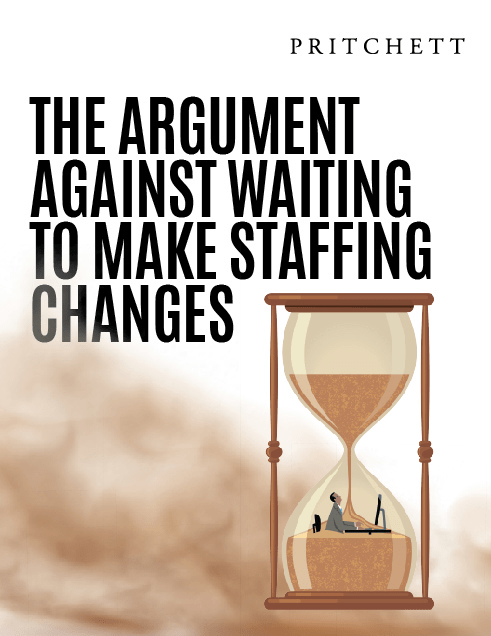A direct product of the merger/acquisition process is an increase in employee turnover. It’s a fact of life that, whether planned or not, there will be merger casualties.
Most of the time merging companies can survive operating with fewer people, but not fewer quality people. So you can’t just sit back and let nature take its course so far as turnover is concerned.
Natural attrition during a merger produces a loss of good employees and minimal turnover among marginal, weak players. The reason for this is obvious—it’s easy for good people to find new jobs, but much more difficult for the lesser talents to reposition themselves successfully elsewhere.
In most cases it’s advantageous to consolidate and downsize. The financial logic driving the merger probably is based on the assumption that certain economies can be achieved through collapsing functions, eliminating redundancies, closing certain facilities, or doing away with some of the layers in the organizational hierarchy.
But too often top management announces that these personnel cutbacks will be achieved gradually through the normal attrition process—i.e., not replacing employees who quit.
One problem with that strategy is that it offers no hope for strengthening the organization. (As mentioned earlier, talent leaves first, not the deadwood.) Secondly, it’s a sluggish approach—an uncontrolled process—which assumes mere passage of time will take care of the problem. That’s not good management. It makes about as much sense as holding an employment lottery, where the composition of your workforce is left to chance.
Here are the ground rules you should follow:
- Always operate with the assumption that there will be turnover which directly results from the merger.
- Plan on taking advantage of the opportunity the merger presents to get rid of marginal employees.
- Look for opportunities to consolidate and streamline for a more efficient organization.
- Move rapidly to re-recruit your good employees.
It’s much easier to succeed with a team comprised of quality players that you select deliberately rather than try to win a game with those who randomly show up to play. Take charge of the situation. . . make sure the new organization is staffed for success.





